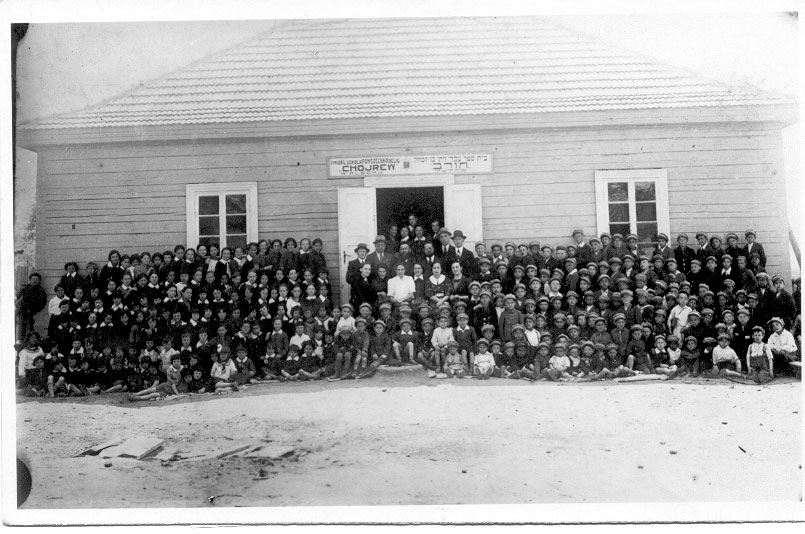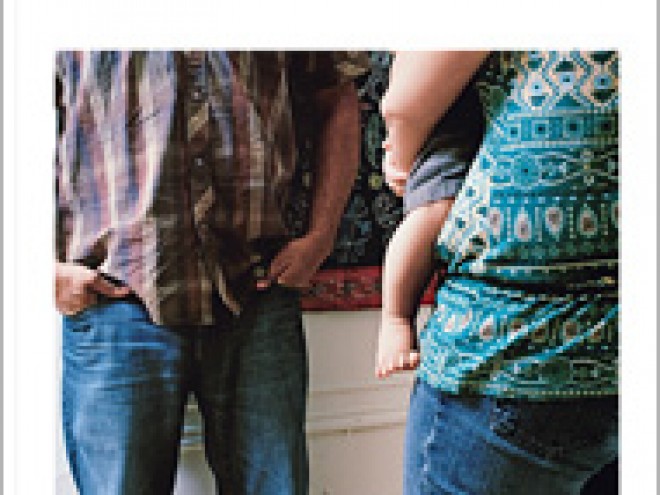In honor of Anne Frank’s birthday this week, Jewish Book Council Intern Nat Bernstein shares her essay “Photography and Remembrance.” Nat is a graduate of Hampshire College.
I hold before me two pictures of schoolchildren taken within twenty years of each other, black and white. The first is a wide shot of a wooden schoolhouse with its doors flung open, out of which pours a posed assembly of teachers, surrounded by rows upon rows of young children — the students. The second is of a single girl smiling comfortably from behind her desk, a pen poised in her hand atop an open book.

Courtesy of the Tarrow Family
Aside from the ages of their juvenile subjects and the scholastic setting, these two pictures do not seem to have much in common. Indeed, the differences between the images not only increase the more one examines them but deepen as soon as the similarities they share are discovered. The school uniform worn by the lone girl at her desk, for example, matches that of the girls standing outside the schoolhouse: a white collar jutting out of a dark sweater, a dark skirt — even the hairstyles of most of the clustered schoolgirls are in a similar fashion to hers. But once one focuses on this commonality between the girls, the differences become immeasurably starker. One suddenly notices the bare legs sprawled on the ground in contrast to the stockings planted firmly under the desk, the primitive structure of the wooden schoolhouse in comparison to the immaculate angles of urban modernity in the girl’s classroom.
The very format of the two depictions — group picture versus individual portrait — increases in significance and distinction upon a closer comparative reading of the images. While the picture of the classroom displays its impressive design and assets, the subject of the image is the girl centered within it. She appears as though intended to seem caught in a semi-candid moment, yet her orderly composure and the positioning of her desk in that strange corner of the room suggest that the portrait is staged. The photograph of the group outside the schoolhouse, by contrast, has the reverse effect: the organized rows of students swerve and stagger out of their intended linear grid, postures and poses vary, here and there a child looks away from the camera — the picture transforms from a staged assembly into a semi-candid group portrait. The subject of this photograph is not any of the individual students in the crowd but rather the crowd itself together with the building behind it: it is a picture of the school as a whole, of the institution. This latter picture was clearly intended as a civic document, a public image; the former to be kept in the privacy of the home.
And yet, the picture of the schoolhouse assembly is a private photograph, and the girl sitting at her desk is a public image. Continue reading here.
Nat Bernstein is the former Manager of Digital Content & Media, JBC Network Coordinator, and Contributing Editor at the Jewish Book Council and a graduate of Hampshire College.



